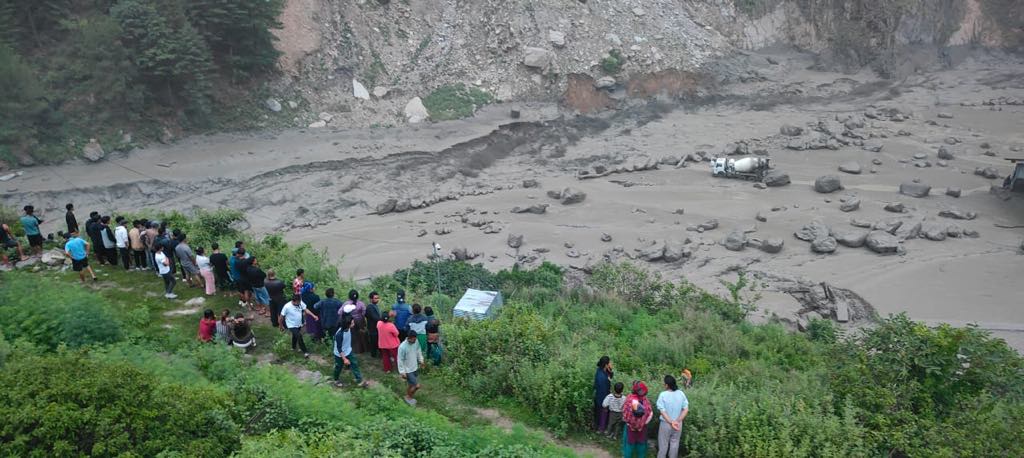

RASUWA: Following heavy rainfall in China’s Tibet region, water levels in Nepal’s Bhotekoshi and Trishuli rivers rose abruptly from Tuesday night, triggering sudden flooding.
In response to the potential threat, the Rasuwa District Administration Office issued an alert at 2 AM Wednesday, urging locals to remain safe.
According to Chief District Officer Arjun Paudel, the exact cause of the flood remains unconfirmed, but authorities suspect either intense rainfall on the Chinese side or a glacial lake outburst, similar to previous incidents.
Although the water flow increased rapidly in the Trishuli 3B hydropower area and nearby Uttargaya, recent updates indicate that water levels are now gradually receding.
Initially, the flood carried mud and debris, but it is now flowing mainly as water. The water level in the Trishuli River passing through the Rasuwagadhi area is also reported to be decreasing. So far, there have been no reports of human casualties.
As the flood risk escalated, security personnel including Nepal Police, the Nepal Army, and the Armed Police Force were immediately deployed to the affected areas to relocate riverside residents to safer locations.
The District Administration has advised residents of riverbank settlements in Rasuwa, Nuwakot, and Dhading to remain alert. It has also issued warnings to avoid risky activities such as fishing or collecting logs and firewood carried by the river.
Earlier, on Asar 24 (July 8), a devastating flash flood in the Lhende stream had swept away the Miteri Bridge connecting the Kerung border and buried dozens of vehicles parked at the customs yard. The same highway stretch has reportedly been damaged again due to the latest flooding.
Currently, local authorities, including the Nepal Army and police, are engaged in monitoring, rescue, and management efforts in the flood-affected areas.
As weather conditions remain unstable, the administration has once again urged the public to exercise extreme caution.